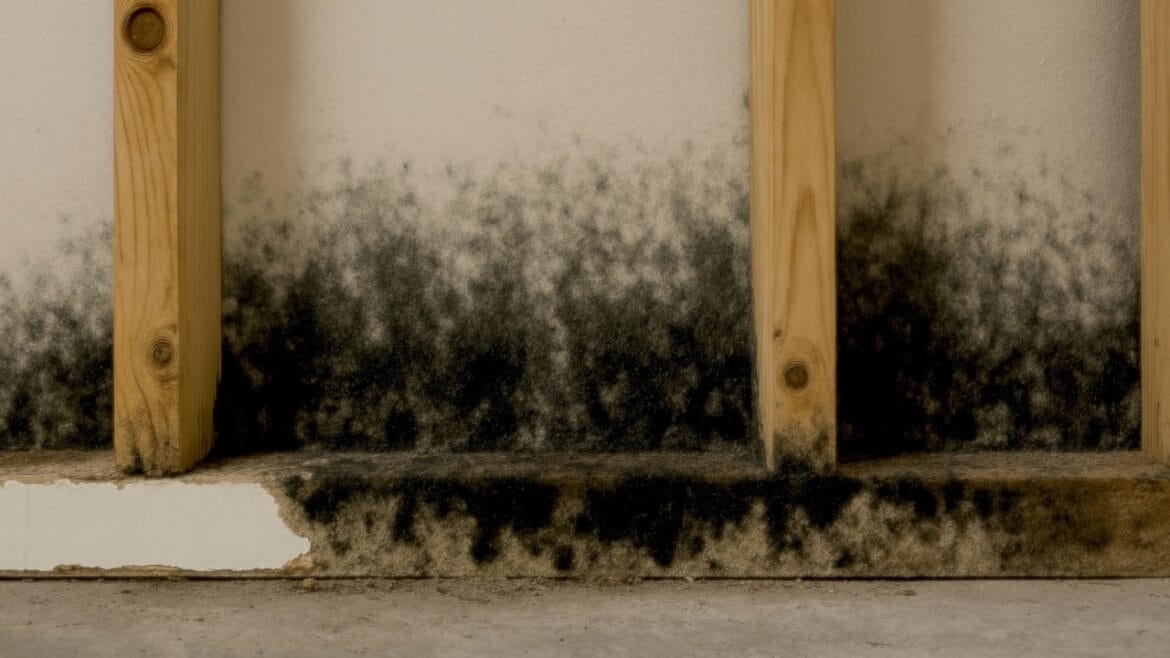If you think you have a mold problem at home, you’re probably worried about the visible stuff.
But visible mold isn’t the only problem—and actually, it’s usually the smallest problem.
Hidden mold is usually more problematic because it’s had time to grow, and is usually in places like behind drywall, under carpet or floorboards, or inside A/C units.
Depending on the types of mold your home has, there’s something else you should know about—something you can’t see, smell, or wipe away with a rag.
Smaller than mold, mycotoxins are about 1/10th to 1/50th the size of most mold spores.
The word “mycotoxins.” comes from the Greek mykes (“fungus”) and toxikos (“poisonous”).
| Mycotoxin Defined | |
|---|---|
| “any toxic substance produced by a fungus.” | Oxford English Dictionary |
| “naturally occurring toxins produced by certain molds…” | World Health Organization |
| “secondary metabolites produced by microfungi that are capable of causing disease and death in humans and other animals.” | National Institutes of Health (NIH) |
| “poisonous substances produced by fungi or mold.” | WebMD |
What Are Mold Mycotoxins?
Mycotoxins are tiny, toxic chemicals that certain types of mold release into the air. They’re not mold spores, and they’re not alive. They are a byproduct of mold—a bit like smoke is a byproduct of fire.
Some molds release these particles as they grow, and they can float around your home, stick to dust, or settle onto soft surfaces like your couch, rugs, or kids’ toys.
That’s what makes them so tricky—they’re invisible but they can still affect your health.
Where Do They Come From?
Not all mold creates mycotoxins, but some of the more common indoor mold types do.
That includes molds like:
- Black mold (Stachybotrys)
- Aspergillus
- Penicillium
- Fusarium
These molds love damp, dark, and humid places—behind drywall, under carpets, in air vents, or anywhere there’s been a fair amount of water damage.
Are Mycotoxins Dangerous?
Yes. But whether you or your family members might be affected by mycotoxins usually depends on how much exposure someone gets, to what kind of mycotoxin, and how sensitive that person is.
What we do know is that some people—especially infants, kids, the elderly, and anyone with asthma or allergies—can react to mycotoxins even at low levels.
Possible symptoms of mycotoxin exposure include:
- Breathing problems
- Headaches or dizziness
- Itchy eyes or skin
- Sinus issues
- Feeling foggy or tired all the time
- Worsening asthma
But beyond these surface level symptoms, mycotoxins may cause other more serious and long-term problems.
Why Mycotoxins Matters to Mold Cleanup
If you find mold in your home, your first instinct might be to grab a mask, gloves, and some bleach and go to town on it.
But scrubbing mold without proper containment will only stir up more mold spores and likely release more mycotoxins into the air.
Even if you clean the visible mold, those toxins can hang around in the air or on soft surfaces long after.
Proper mold remediation involves air filtration, containment zones, and special tools and procedures to not only remove mold, but to deal with the airborne spores and mycotoxins without spreading them further.
We’re not here to scare you—but to inform you.
Understanding what mycotoxins will help you make smarter choices when it comes to your family’s health and your home.
If you’re dealing with:
- A recent leak or flood
- A lingering musty smell
- Ongoing allergy symptoms you can’t explain
- Or visible mold in your home
It’s worth bringing in a professional—not just to clean, but to protect the air you and your loved ones breathe.
Call Us If You’re Concerned
You don’t need to know everything about mycotoxins, but knowing they exist, and that they can’t be wiped away with a paper towel, is a great start.
If you’re in the Tampa Bay area and are concerned about mold, mycotoxins, or water damage, give Mold Solutions a call at (727) 276-4787, or request a free environmental consultation using the form below.
Local, licensed, and insured, we’re here to help make your home safe and healthy again.







